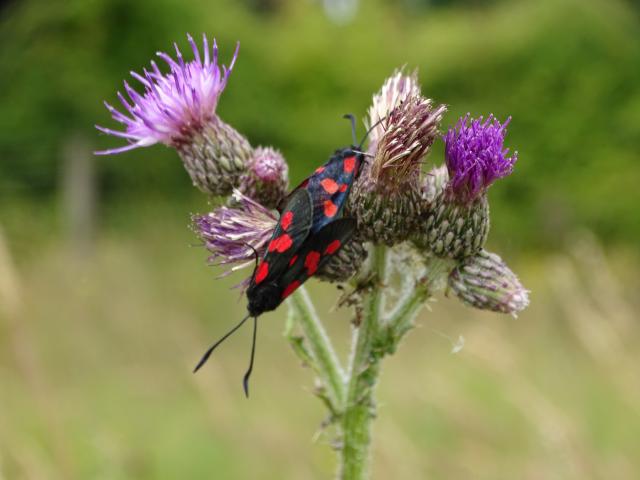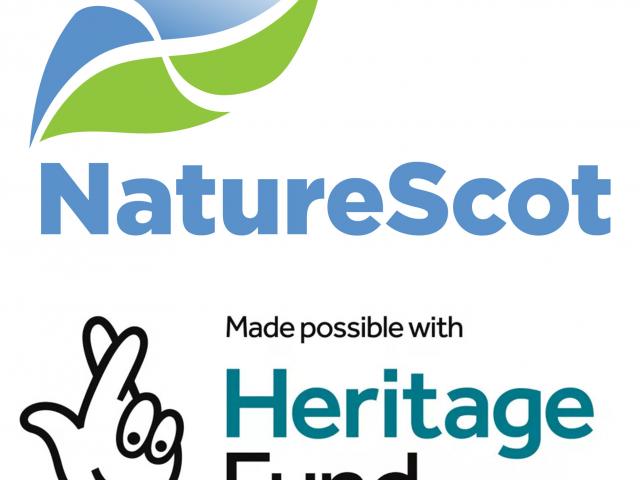This article was original featured in the Autumn 2022 copy of Butterfly Magazine - exclusively available to Butterfly Conservation members. Sign up to become a member here.
Looking at new ways of engaging with people to create a more inclusive and accessible future is key to developing conservation support, says Anthony McCluskey.
Helping Hands for Butterflies Project wrapped up in September, after running for three years. Funded by the National Lottery Heritage Fund and NatureScot, one of the main aims of the project was to involve a wider range of people with different backgrounds and abilities in Butterfly Conservation’s work in Scotland.
When the project started in October 2019, nobody could have foreseen the global pandemic that was about to change everything about how we worked – making us switch to online learning much more quickly and effectively than we would have.
More than 400 different people attended my online workshops held over Zoom – far above the original target of 240 for the entire project. My colleagues and I in Scotland also moved our Scottish Members’ Day and Recorders’ Gatherings online, which meant that people from all over Scotland and further afield could hear about our work. This was particularly useful for reaching people living in some of the remote places where our priority species for monitoring are found, and who would have had long and expensive journeys to attend our in-person events.
While online workshops can never fully replace the experience of showing people butterflies in real life, they certainly have a place now, and help us overcome some of the old barriers around event attendance. They also allow us to engage with people with disabilities, who may not have attended our workshops before. Some of the respondents to feedback surveys said this was the case, and were grateful that they could take part in their first Butterfly Conservation events as a result.
Breaking down barriers
However, we also have to make in-person events as genuinely accessible as possible. It’s not enough for us to say that we will run online events to include everybody. My final project report will make recommendations to other Butterfly Conservation staff and volunteers on how to do this.
We can make our volunteer opportunities more accessible, too. The vast majority of our butterfly transects (routes for recording butterflies regularly through the summer) are in sites that would be inaccessible for wheelchair users, people with limited mobility, or children in pushchairs. So this year I worked with staff at Urban Roots – which runs community-led environmental projects in Glasgow – to create a new, fully accessible butterfly transect at their Malls Mire Local Nature Reserve. The transect runs entirely on good-quality paths that anyone can use, and we have three volunteers now carrying out surveys there. We will be using this as an example of the importance of creating volunteer opportunities like this, with a broader audience in mind.

When the transect at Malls Mire was set up, Urban Roots advertised the opportunity to people in the local area and I went along to meet them and show them the route. Some of the people had already attended my online classes, but the opportunity to meet people in person was a reminder of the richness of face-to-face contact. For example, we saw Small Heath butterflies (a typical comment from the volunteers about them: ‘I would have thought that was a moth!’), and I was able to show them where to look for Common Blue butterflies and Six-Spot Burnet moths, by showing them patches of Bird’s-foot Trefoil (the larval foodplant for those species – the volunteers have since spotted the adults!).
While I can show people photographs of Small Heath during online presentations, and provide my usual warning that they look orange in fight but close their wings immediately on landing to become camouflaged, nothing can beat seeing them in person.
Malls Mire represents diversity in other ways as well. Much of the reserve is a former industrial site and is surrounded by houses and factories in one of the more economically challenged areas of Glasgow. Such sites are just as valuable for butterfly monitoring as the species-rich wildflower meadows in the countryside that we perhaps focus on when choosing sites to monitor. It’s also surrounded by housing but is one of the most biodiverse greenspaces for thousands of people living nearby. By engaging with them, and other people in large urban areas, we are working with more diverse audiences; this is important to us as we believe that everyone has the right to enjoy the wonderful world of butterflies and moths, no matter where they live. Time and again I have seen that the best way to engage with new audiences is to meet them where they are, in their local greenspaces, rather than expecting them to find me.



